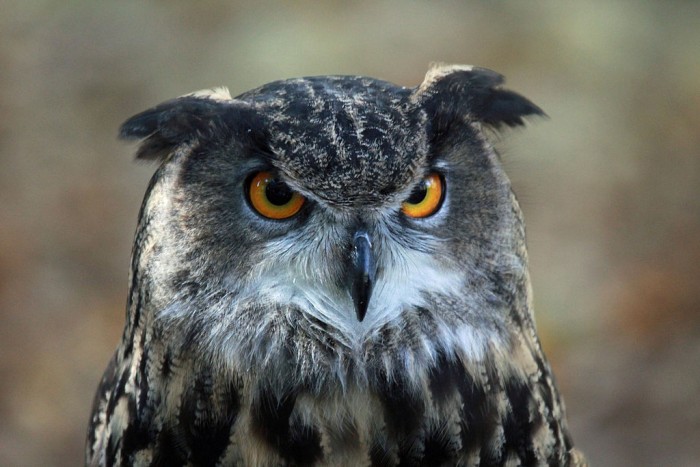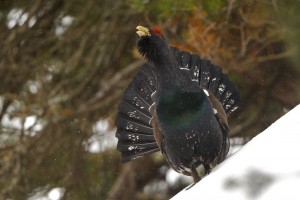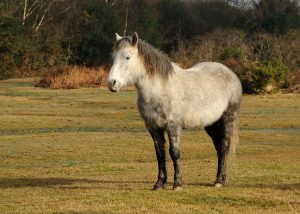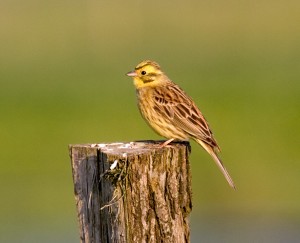Eagle Owls in the UK – Native or Not?
The Eagle Owl is never far from the headlines in recent times; welcomed by many, persecuted by some and virulently condemned by others – largely due to their tendency to predate raptor species, including those of conservation concern
 Image: By DickDaniels (http://carolinabirds.org/) – Own work, CC BY-SA 3.0, https://commons.wikimedia.org/w/index.php?curid=17039928
Image: By DickDaniels (http://carolinabirds.org/) – Own work, CC BY-SA 3.0, https://commons.wikimedia.org/w/index.php?curid=17039928 It is common knowledge that Britain now holds a growing population of Eurasian Eagle Owls (Bubo bubo) though the origin of these pioneering predators is subject to sometimes heated debate. The Eagle Owl, one of the world’s largest and most awe inspiring owl species is never far from the headlines in recent times; welcomed by many, persecuted by some and virulently condemned by others – largely due to their tendency to predate raptor species, including those of conservation concern. Something brought home in 2010 when an Eagle Owl was filmed attacking a nesting female Hen Harrier in Bowland, Lancashire. For this reason, many conservationists go as far as to suggest that the species has no place among our islands fauna. Likening the species to other problematic invasive species such as mink and signal crayfish. Others believe that B.bubo does in fact occur naturally in the UK; pushing for the full protection of the species and its addition to the official ‘British list’ of breeding birds.
Recently the Eagle Owl was cast into the spotlight once again, notable sportsman Sir Ian Botham using the species as the basis for a scathing attack on the RSPB. In his article, published in the Daily Mail and found here, Botham accuses the RSPB of wanting to “nip the ongoing colonisation of Eagle Owls in the bud” and goes as far as to accuse conservationists of deliberately disturbing nesting owls. These accusations have been dismissed by the RSPB, who stress that at present, no action is being taken against the species. Instead the RSPB highlight the need to monitor the ongoing spread of B.bubo with regards to the potential implications associated with the presence of the species in Britain – not ruling out future action should problems emerge. All of this, whether based in fact or fiction has once again hurled Bubo bubo into the limelight. Many, it seems, are unable to decide whether the species is in fact a natural figment of the British landscape, an acceptable non-native on par with the much smaller Little Owl or indeed, a damaging invasive species worthy of control measures.
Britain’s existing Eagle Owls
it is the opinion of some, that the Eagle Owls currently dwelling in the UK are decedent entirely from domestic stock (RSPB, 2016). The species has been kept commonly in captivity since the 17th century and remains a popular choice of pet for many, including non-falconers, due to the fact no formal license is required to own one. When selling an Eagle Owl, a certificate is however required; such certificates can be used to give an insight into how many owls are kept in the UK. In the ten years leading up to 2007, over three thousand such certificates were issued though this only represents birds sold to new owners and it is estimated that many more are kept nationwide (RSPB, 2016). With so many owls kept as pets, it is inevitable that some will find their way into the wild – whether through deliberate releases or accidental escapes. Indeed, the RSPB estimate that as many as 65 owls could escape into the wild each year. Many of these likely to survive due to the owls broad diet and adaptation to our climate. Both the RSPB and British Ornithologists Union (BOU) hold the opinion that the Eagle Owl residing in Britain at present are non-native.
Whereas many of Britain’s Eagle Owls almost certainly stem from domestic escapes, there are those who argue that the species has occurred naturally in the UK – contrary to the claims of the RSPB and British ornithologists Union (BOU). Among these, the World Owl Trust have proven vocal on the matter. Citing records from Orkney (1830), Shetland (1863, 1871) and Argyll (1883) and highlighting the continued expansion of the species in mainland Europe, the trust suggest that there is no reason that at
least some of the Eagle Owls currently inhabiting Britain could have occurred naturally. The World Owl Trust also highlight a wealth of data that appears to suggest wild Eagle Owls have existed (and still exist) in the UK. Among this; perhaps the most persuasive argument put forth is the presence of B.bubo in the fossil record – something which suggests that the Eagle Owl did indeed inhabit the UK before eventually succumbing to extinction. In a 2007 study published in British Birds, John Stewart concluded, following a review of the archaeological records, that “Eagle Owls form a natural part of Britain’s fauna”. This paper is freely available online.
The World Owl Trust also put forth other evidence to suggest that B.bubo is in fact native to the British Isles, the following appearing to lend credence to this theory:
* The occurrence of three birds in Donegal, Ireland following a a sevre northeasterly weather front.
* The account of R, Bowdler Sharpe of the Zoological Department of the British Museum, suggesting that wild birds have been previously shot on Orkney and Shetland – where the likelihood of escapes occurring is severely diminished.
* The recording of this species as a “rare vagrant” by numerous sources including Bernard Tucker, author of ‘the handbook of British Birds’, as well as T.A Coward and Charles St. John.
* The conclusion of the authors of the renowned Collin’s Bird Guide that “a handful of genuine records have occurred in Britain, all in the 19th Century”
* Reliable sightings (and photographic evidence) of Eagle Owls resting on North Sea oil platforms
All in all, the World Owl Trust provide a veritable smorgasbord of information suggesting that the Eagle Owl is in fact a native British species, all of which can be found here:
http://www.owls.org/sites/default/files/Eagle_Owls_In_Britain_Dossier_Revised.pdf
The debate surrounding the Eagle Owl in Britain is a very interesting one. Personally I find myself agreeing with the stance of John Stewart and those at the World Owl Trust – I believe that Eagle Owls have and indeed, still do occur wild in Britain. Until a ringed bird is recovered however or a bird is actually caught in the act of migrating, the debate will rage on. The RSPB and other parties are right to monitor the situation, though I, like many other birders, welcome the addition of the Eagle Owl to the British List and look forward to, some day, viewing these imposing predators wild in the UK. Something which may never happen if action is taken to halt the further spread of the species, though only time will tell if such action is ever deemed necessary.





15 Comments
There are numerous points in this article which I think are very questionable. To take just one point the World Owl Trust are said to have put forward “Reliable sightings (and photographic evidence) of Eagle Owls resting on North Sea oil platforms”. I am not aware of any such records, nor do the North Sea Bird Club have any. There is a video on YouTube which claims to show an Eagle Owl on a North Sea oil platform but which actually shows a Long-eared Owl.
For more information see the article The Eagle Owl in Britain (British Birds 101:478-490). It is freely available online http://bit.ly/2aYsQxe. There is also a follow-up note in British Birds (104:544-546) which gives additional information.
It is also worth reading an item on the Raptor Politics website http://bit.ly/2bdZieE. Especially the comments, though these end somewhat abruptly when Tony Warburton (the author of the World Owl Trust paper) realises that he has got some of his facts wrong.
Wishful and irrational thinking on behalf of those who want to add Bubo to the list of native species .. From people who also spot the occasional UFO or Nessie .. Snap out of it fools
Today I was disturbed by the sound of screeching crows…I looked out my bedroom window to see the most beautiful eagle owl perched on the top of our large iron gate . I took some photographs as best I could through my window as its not a sight I’m likely to see again …and even managed to catch it on video as it flew off ..it was being chased by 4 crows and 2 magpies and it flew across the road and onto someone’s roof ..I am in Ashford in Kent ..I’ve never seen one in the wild before and have lived here for nearly 60 years ..was beautiful to see .
Wonderful to here these owl are class bird in my eyes one of the best
A bit like the idiots that decided introducing and maintaining a populatuion of red kites was a good idea?
Looking at uk red kite there are more than enough birds of prey,ie red kite this will be coming from rspb.
I am going to fly to the UK from the USA to see the eagle owl. I have to hear his hoot with my own ears. Any good recommendations where I could spot one. I plan on going to the area and hiking around until I find him.
I am going to make a tour of other owl hotspots while I am there!!!
There is wild eagle owl in the uk the silent predator brill to watch the more we have in uk the better.As small birds are vanishing fast sparrow hawk & peregrine they are a prob big time the eagle owl to slow for the little fellows,but the silent hunter the owl takes them from the nest so it will give small lads a chance the sparrow male is fast big problem.so there will be more coming to the uk I have seen it on video every one you talk to saying where are the little birds going yes some die don’t live long,but they leave of spring so the eagle owl takes rabbits to rspb who cares about these so called bird lovers don’t think so they are a joke
Hi
Love birds of prey don’t like Percy & sparrow hawk,I race pigeons by the way that the only 2 most fanciers would say eagle owl are wonderful big help to pigeon men rspb are idiots in my book can’t stand these people half is fake news I have photo of dead birds.i say to the public don’t be brain washed these raptors are killing 1000 of small birds disgrace
Eagle owl wonderful bird to watch, some character about these birds they are to slow for our little fellows,watched one take rabbit over a field brilliant silent night hunters there once they target there prey and go for it seen a dvd on line they live in woodland in Germany and France big thing about owl they go for raptors that kill the small birds.because small lads are getting killed in there 1000s throughout uk
Hi
The eagle owl lovely to watch there is owl in uk one good point they kill big prey and rabbit Percy and sparrow hawk the owl take these raptors one good thing the small birds are killed in there thousands in uk with Percy and sparrow hawk rspb say give nature a place
Spotted an eagle owl last night,June 8th,in the naval base near helensburgh, lovely sight.
The magnificant top predictor eagle owl: recently doing well in nearby Holland and other parts of Europe, known to fly great distances over mountain ranges, and well recorded in UK history. Logically, why should it single out, short distance, Britain as a ‘no go’ location,
Why is its past existence denied by many here and singled out as an unwanted species, when support to reintroduce other predators is so vigorous . With its varied diet rich in rabbit and (ubiquitous) buzzards, some, other than racing pigeon keepers, might well value its its natural rebalancing inclusion in our eco system control: evident in continental europe.
Those people against the eagle owl out of fear for the harriers need to do their homework. Long-term studies out of Europe cite the common buzzard and the long-eared owl as their most commonly taken prey – when it comes to birds-of-prey. In fact, they eat more goshawks than harriers – which should be a good thing for the harriers. Bear-in-mind, birds-of-prey are rarely taken in comparison to mammals.
Are there any sites in the Uk that I can visit to see Eagle Owls? Trough of Bowland is mentioned but that is a huge area!